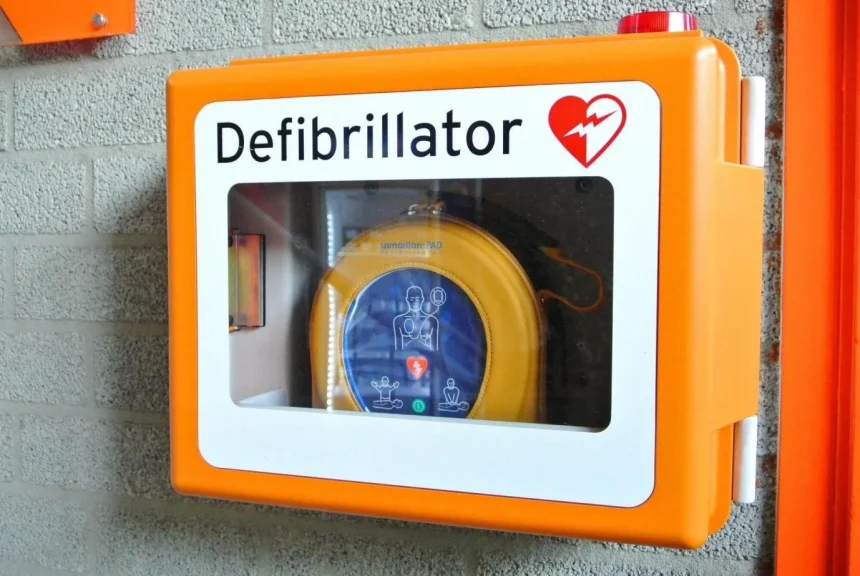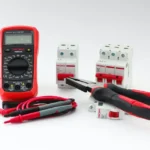In an emergency situation, every second counts. When someone suddenly collapses and their heart stops beating, immediate action is critical. One of the most effective life-saving tools in these moments is an Automated External Defibrillator (AED). However, knowing how and when to use an AED is just as important as having one nearby.
This guide will walk you through everything you need to know about AED training: from understanding what an AED is, to why AED training is essential, and how to get certified. Read on.
What is an AED?
An Automated External Defibrillator (AED) is a portable, easy-to-use medical device designed to analyze the heart’s rhythm and provide an electric shock, or defibrillation, to someone experiencing sudden cardiac arrest (SCA). Sudden cardiac arrest occurs when the heart stops pumping blood due to an irregular rhythm (arrhythmia). Its often caused by a condition like ventricular fibrillation (VF).
The goal of an AED is to restore the heart’s normal rhythm, potentially saving the person’s life. The device is equipped with voice prompts, visual instructions, and automatic shock delivery if necessary. AEDs are commonly found in public places such as:
- airports
- schools
- shopping malls
- sports arenas
- corporate offices
Make sure to consult an expert to learn more about using an auto defibrillator.
Why is AED Training Important?
AEDs are user-friendly and designed for anyone to use, regardless of medical experience. However, having proper AED training ensures you can use the device efficiently and confidently when it counts. Here are some key reasons why AED training is crucial:
Confidence in Emergency Situations
In high-stress scenarios, it’s easy to feel overwhelmed. Emergency response training prepares you to take action quickly and without hesitation. It also can reduce the anxiety of using the device in an emergency.
Maximizing Survival Rates
The chances of survival decrease by about 10% for each minute that passes without defibrillation during a cardiac arrest event. By having trained individuals around, the likelihood of performing early defibrillation increases. It gives the person a much better chance of survival.
Legal Protection
In many regions, Good Samaritan laws provide legal protection to those who offer help in an emergency situation. By being trained, you reduce your risk of making mistakes and increase the likelihood of providing proper care, all while being legally protected.
Complementary Life-Saving Skills
AED training often includes CPR (cardiopulmonary resuscitation) as part of the certification course. Knowing how to perform CPR and use an AED together significantly increases a person’s chance of survival before medical professionals arrive.
Key Features of AEDs
Understanding the basic features of an AED can make you feel more comfortable using one. While the specifics may vary between models, most AEDs share the following components:
Electrode Pads
These are placed on the chest of the person in need of defibrillation. They detect the heart’s electrical activity and deliver the shock if necessary.
Voice Prompts
Most AEDs provide clear, step-by-step voice instructions to guide the user through the process. This feature is crucial in emergencies when the user may be feeling panicked.
Shock Button
In some devices, the shock button is automatically pressed by the device once it has analyzed the heart’s rhythm. In others, you may need to press it yourself.
Battery and Pads Indicator
AEDs have a battery and electrode pads that need to be maintained and replaced periodically. Some AEDs will alert you if these are running low.
Defibrillation Shock
The device delivers an electrical shock to the heart if needed. This is to reset the heart’s rhythm and potentially restore normal cardiac function.
Steps Involved in AED Training
AED training courses are typically structured to help you become proficient in recognizing sudden cardiac arrest, performing CPR, and using an AED correctly. Here’s an outline of the process:
Recognizing Sudden Cardiac Arrest
The first step in an emergency is identifying that someone is experiencing sudden cardiac arrest. Signs to watch for include:
- The person suddenly collapsing
- Loss of responsiveness (unconsciousness)
- Absence of normal breathing or abnormal breathing (gasping)
- No pulse (which you can check by feeling the carotid artery in the neck)
Calling for Help
Once you’ve identified that the person is in cardiac arrest, call emergency services immediately. If you are in a public setting, ask someone else to call 911 (or the appropriate emergency number in your region). It’s important to ensure help is on the way while you provide immediate care.
Performing CPR
While waiting for help to arrive, begin CPR to keep blood flowing to vital organs, particularly the brain. AED training usually teaches chest compressions and rescue breathing. If you don’t know rescue breathing, focus on performing chest compressions until the AED is available.
Chest Compressions
Place your hands in the center of the chest, with one hand on top of the other. Press down hard and fast (at least 2 inches deep and 100-120 compressions per minute).
Rescue Breaths (if trained)
After every 30 compressions, give 2 rescue breaths (or continue compressions if not trained in breathing).
Using the AED
Once the AED arrives, turn it on and follow the voice prompts. The AED will guide you through every step of the process:
Attach the Electrode Pads
The device will show you where to place the pads on the person’s bare chest (one on the upper right and the other on the lower left side of the chest).
Analyzing the Heart Rhythm
The AED will analyze the person’s heart rhythm to determine if a shock is necessary. Ensure no one is touching the person while this is happening.
Administering the Shock
If the AED determines that a shock is needed, it will either automatically deliver it or prompt you to press a button to deliver the shock. After the shock is given, continue CPR until medical help arrives.
Continuing to Monitor the Person
Even after a shock is administered, continue to monitor the person’s pulse and breathing. If there is no response or if the person does not start breathing normally, continue with CPR and follow the AED’s prompts until emergency medical services arrive.
Get an AED Training Now
Knowing how to use an AED can make the difference between life and death in a cardiac emergency. Through CPR and AED certification, you’ll gain the confidence and knowledge to act swiftly in critical moments, potentially saving someone’s life.
AED training is a vital skill that can have a lasting impact. Take the step to get certified today and be ready to act when someone’s heart stops beating. Book a lifesaving skills course now!
If you want to read more articles, visit our blog.





